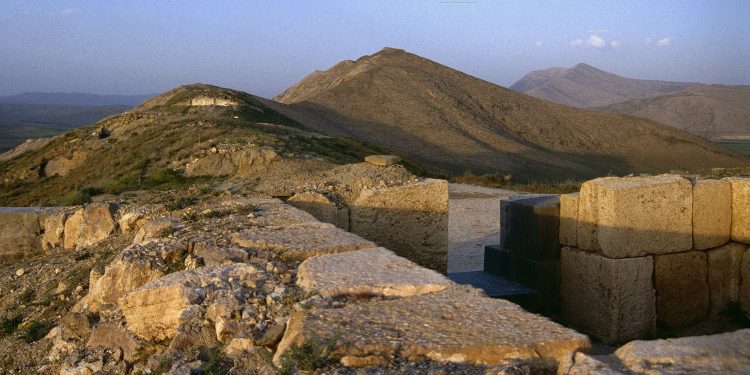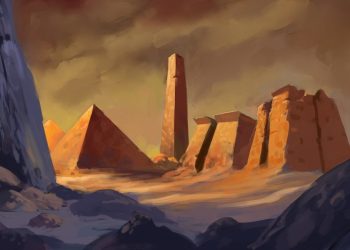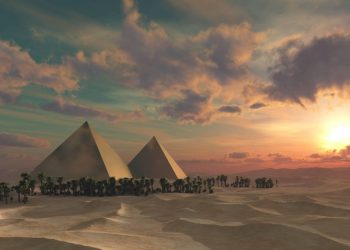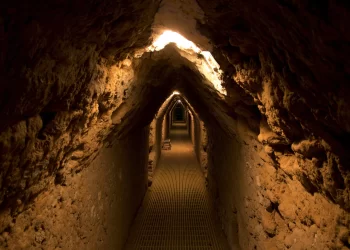Cavustepe (Çavuştepe) Castle is an ancient site that offers visitors an extraordinary glimpse into the fascinating world of the Urartian civilization. Here’s a listicle that explores some of the most interesting features of the castle.
Location and History
Çavuştepe Castle is situated in the Gürpınar District, approximately 25 km southeast of Van in Turkey, and can be found along the Van-Hakkari-Iran highway. The castle was constructed in the middle of the 8th century BC under the leadership of the Urartian King Sarduri II. The castle occupies two hills located at the western end of Bol Mountain, and it spans approximately 1 km. The castle is fortified by sturdy walls and two moats, both of which are carved into the rock on the east and west sides.
Upper and Lower Castle
Çavuştepe Castle is divided into two sections, the “Upper Castle” and the “Lower Castle.” The Upper Castle, located on the eastern side, features a square-planned temple with a portico dedicated to the Urartian chief god Haldi and other religious sites. Surrounded by sturdy walls, the Upper Castle has a rectangular layout but is smaller in size than the Lower Castle. The Lower Castle, situated on the west side, measures 430 meters in length and 125 meters in width.
Palace and Temple
The Lower Castle houses a palace section, storage rooms, workshops, and a second temple dedicated to the god Irmusini. The palace, measuring 81×33 meters, is built on rock-cut foundations and divided into three sections with two rows of piers. Corridors are present on both sides, with the southern one extending to the Irmusini Temple. The Irmusini Temple’s square-planned sacred room has inner walls measuring 4.50×4.50 meters, adorned with elaborate paintings featuring floral motifs in blue, red, black, and white.
Uçkale
Uçkale is a rectangular construction situated in the eastern part of the Lower Castle, measuring 27.50×17.30 meters. It was constructed with exceptional craftsmanship, unlike any other Urartian castle identified to date. Despite the uncertainty regarding its primary function, it is believed to have served a religious purpose.
Necropolis
The Necropolis of Çavuştepe Castle is situated approximately 1 km north of the castle. Unfortunately, many illegal excavations have taken place, causing significant damage to the Urartian Cemetery. Despite this, archaeologists have been able to extract vital information regarding the burial customs of the Urartian society through excavations. The burial customs of the Urartians consist of two types – the cremation of the deceased, whose ashes are then interred in an urn, and the burial of the deceased in the fetal position on their side in the ground (known as Hoker). Four distinct types of tombs have been identified in the Necropolis, providing crucial insights into the Urartian culture and way of life.
Cyclopean Masonry
One of the most striking features of Çavuştepe Castle is its impressive Cyclopean masonry, a construction style that involves massive, irregularly shaped stones without mortar. The stones are so large that it is said that only the mythical Cyclops could have lifted them, hence the name. This type of construction is a testament to the advanced engineering skills of the Urartian civilization and adds to the castle’s overall grandeur and sense of awe.
Conclusion
The Çavuştepe Castle stands as a remarkable testament to the Urartian civilization’s engineering prowess and unique style. Visitors can explore the castle’s ruins and marvel at its awe-inspiring architecture, intricate carvings, and religious sites. The Necropolis also provides a glimpse into the fascinating burial customs of the Urartian society. Anyone interested in history, archaeology, or ancient engineering will find visiting the Çavuştepe Castle an unforgettable experience.
PLEASE READ: Have something to add? Visit Curiosmos on Facebook. Join the discussion in our mobile Telegram group. Also, follow us on Google News. Interesting in history, mysteries, and more? Visit Ancient Library’s Telegram group and become part of an exclusive group.











